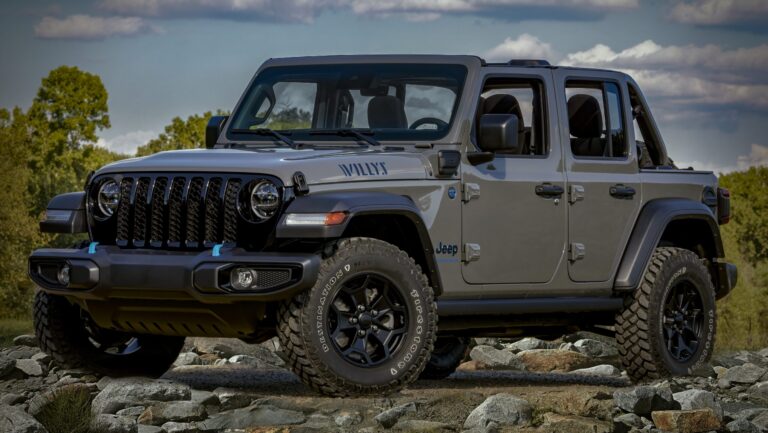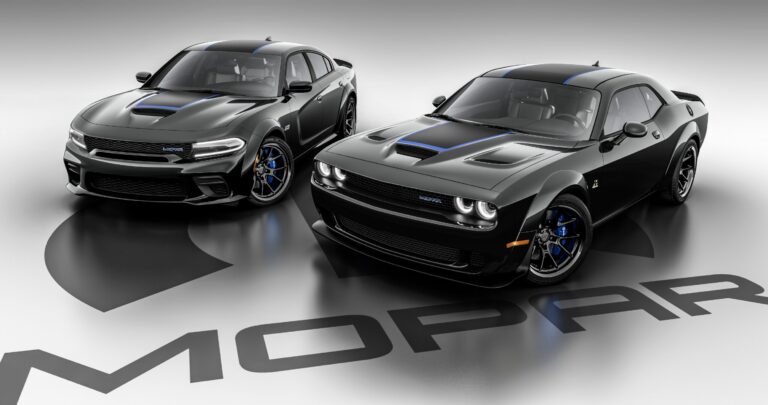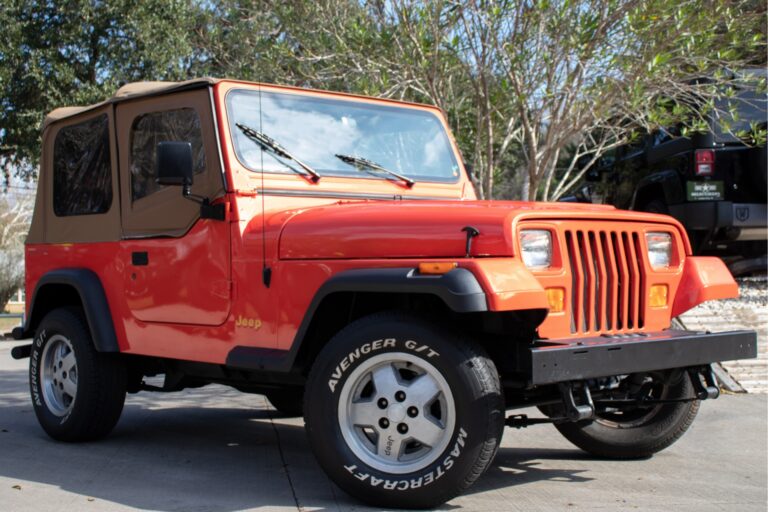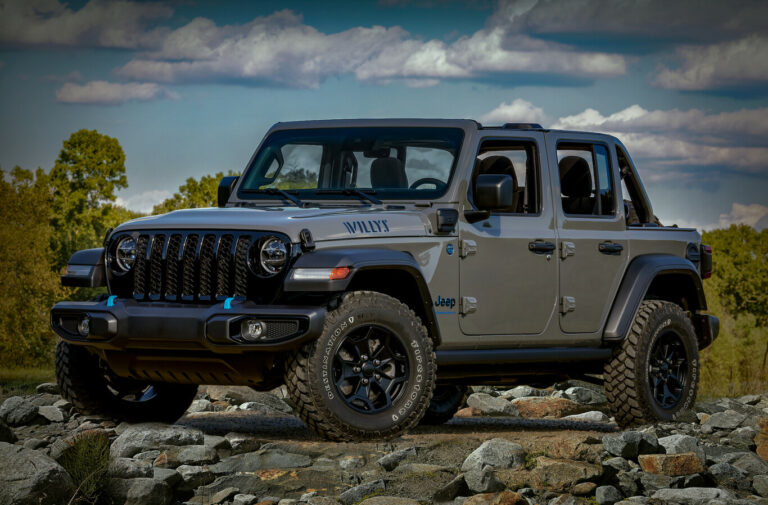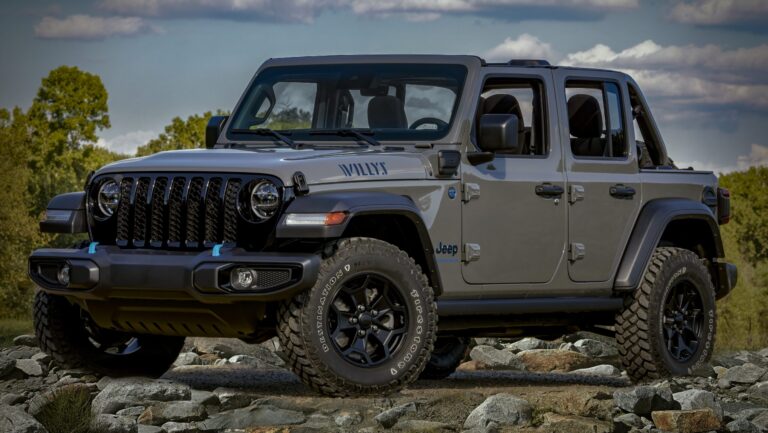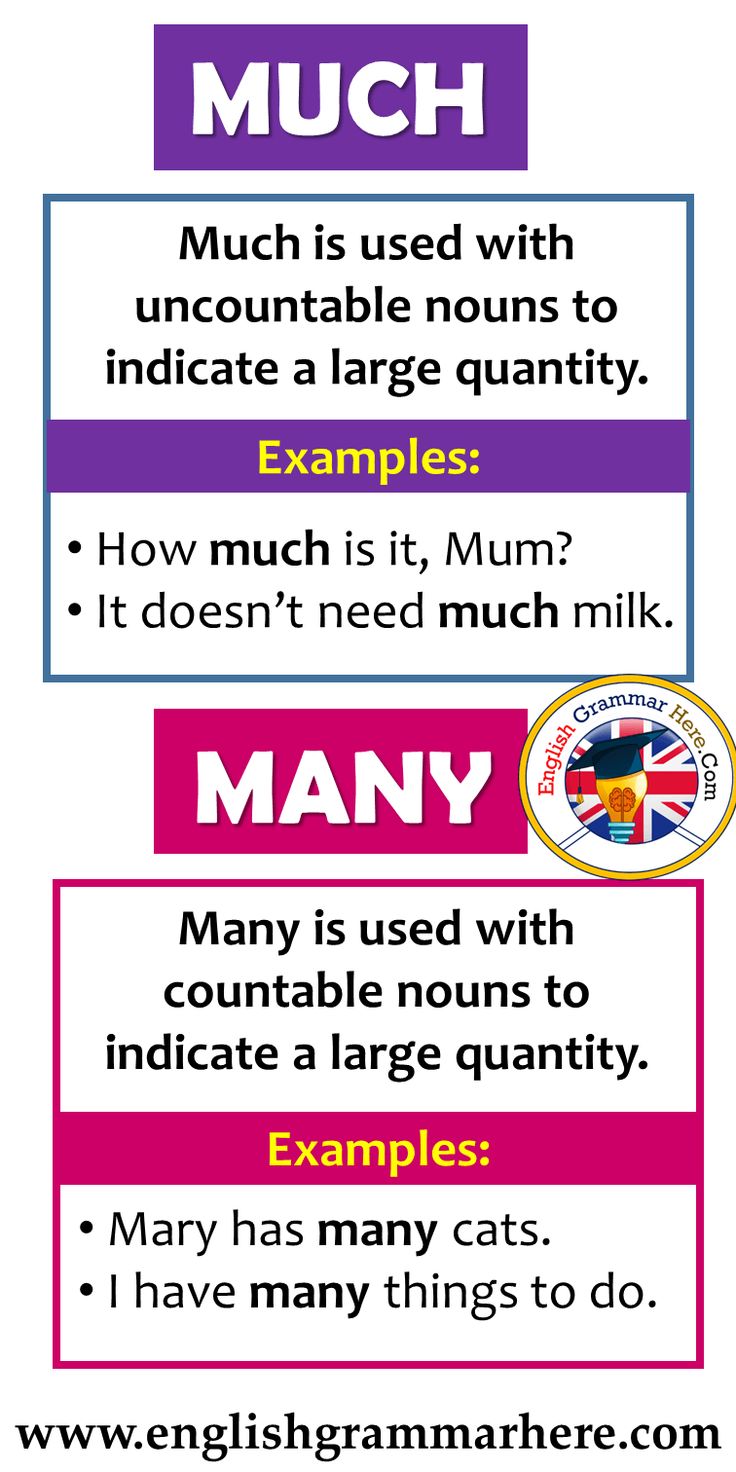1986 Jeep CJ7 For Sale: A Comprehensive Buyer’s Guide
1986 Jeep CJ7 For Sale: A Comprehensive Buyer’s Guide jeeps.truckstrend.com
In the vast landscape of classic American automobiles, few vehicles command the same level of enduring affection and rugged mystique as the Jeep CJ7. And among the various iterations of this legendary off-roader, the 1986 model holds a particularly special place. As the final year of the venerable CJ (Civilian Jeep) series before the introduction of the Wrangler, the 1986 CJ7 represents the culmination of decades of evolution, embodying the raw, unfiltered spirit of open-air adventure while benefiting from the refinements made over its lifespan. For anyone considering a "1986 Jeep CJ7 For Sale," this isn’t just a transaction; it’s an opportunity to own a piece of automotive history, a vehicle renowned for its go-anywhere capability, iconic styling, and a driving experience that is uniquely engaging. Whether you’re an avid off-roader, a classic car collector, or simply seeking a distinctive vehicle that promises unparalleled fun, understanding the nuances of purchasing a 1986 CJ7 is paramount. This guide will walk you through everything you need to know to make an informed decision and confidently navigate the market for this highly sought-after classic.
1986 Jeep CJ7 For Sale: A Comprehensive Buyer’s Guide
I. The End of an Era: Why the 1986 CJ7 Stands Out
The 1986 Jeep CJ7 holds a significant position in Jeep lore, being the last of its kind. Its discontinuation marked the end of a direct lineage tracing back to the original Willys MB of World War II. This final production year allowed for the integration of all the improvements and refinements that Jeep had developed for the CJ series, making it, in many ways, the most polished and capable factory-built CJ.
One of the most notable distinctions of the CJ7, including the 1986 model, was its slightly longer wheelbase compared to the CJ5, offering improved stability, especially on the highway. It also featured a wider track, further enhancing its balance and road manners without sacrificing its legendary off-road prowess.
Engine options for the 1986 CJ7 typically included:
- AMC 2.5L I4 (150 cu in): The base engine, offering reasonable fuel economy for its time, though often considered underpowered by enthusiasts.
- AMC 4.2L I6 (258 cu in): The most popular and arguably the most desirable engine. Known for its robust torque, reliability, and relatively simple design, making it a favorite for off-roading and easy maintenance.
- AMC 5.0L V8 (304 cu in): While less common and often an aftermarket swap, some earlier CJs had this option, and it’s worth noting as you might encounter swapped vehicles. The 1986 factory models rarely, if ever, came with this.

Transmission choices included the standard 5-speed manual (Tremec T-176 or later AX-5/AX-15 variants, though T-176 was more common for 1986 with the I6) or the optional 3-speed automatic (TorqueFlite 904 or 999). The transfer case was typically the robust Dana 300, known for its strength and reliability, providing a low range for serious off-roading. Axles were usually Dana 30 in the front and AMC 20 in the rear (or sometimes a Dana 44 for specific packages).
Beyond the mechanicals, the 1986 CJ7 retained the iconic features that define a Jeep: removable doors, a fold-down windshield, and the classic seven-slot grille. These elements combine to offer an unparalleled open-air driving experience that modern SUVs simply cannot replicate. Its rugged, body-on-frame construction and leaf-spring suspension system contribute to its legendary durability and off-road capability.
II. What to Look For: Essential Inspection Points When Buying a 1986 CJ7

Acquiring a 1986 Jeep CJ7 is often a labor of love, but it requires meticulous inspection. These vehicles are nearly 40 years old, and their history, usage, and maintenance (or lack thereof) will significantly impact their condition and value.
-
Rust, Rust, Rust: This is the absolute biggest enemy of any vintage CJ. Pay extremely close attention to:
- Frame: Inspect the frame rails, especially around the body mounts, spring hangers, and behind the front wheels. Look for flaking, perforations, or poorly executed repairs.
- Body Tub: Check the floorboards (especially under the pedals and seats), rocker panels, wheel wells, and tailgate. The area around the roll bar mounts is also prone to rust.
- Fenders and Hood: Look for bubbling paint or rust in the seams.
- Windshield Frame: Rust is very common here, especially along the bottom edge where it meets the cowl.
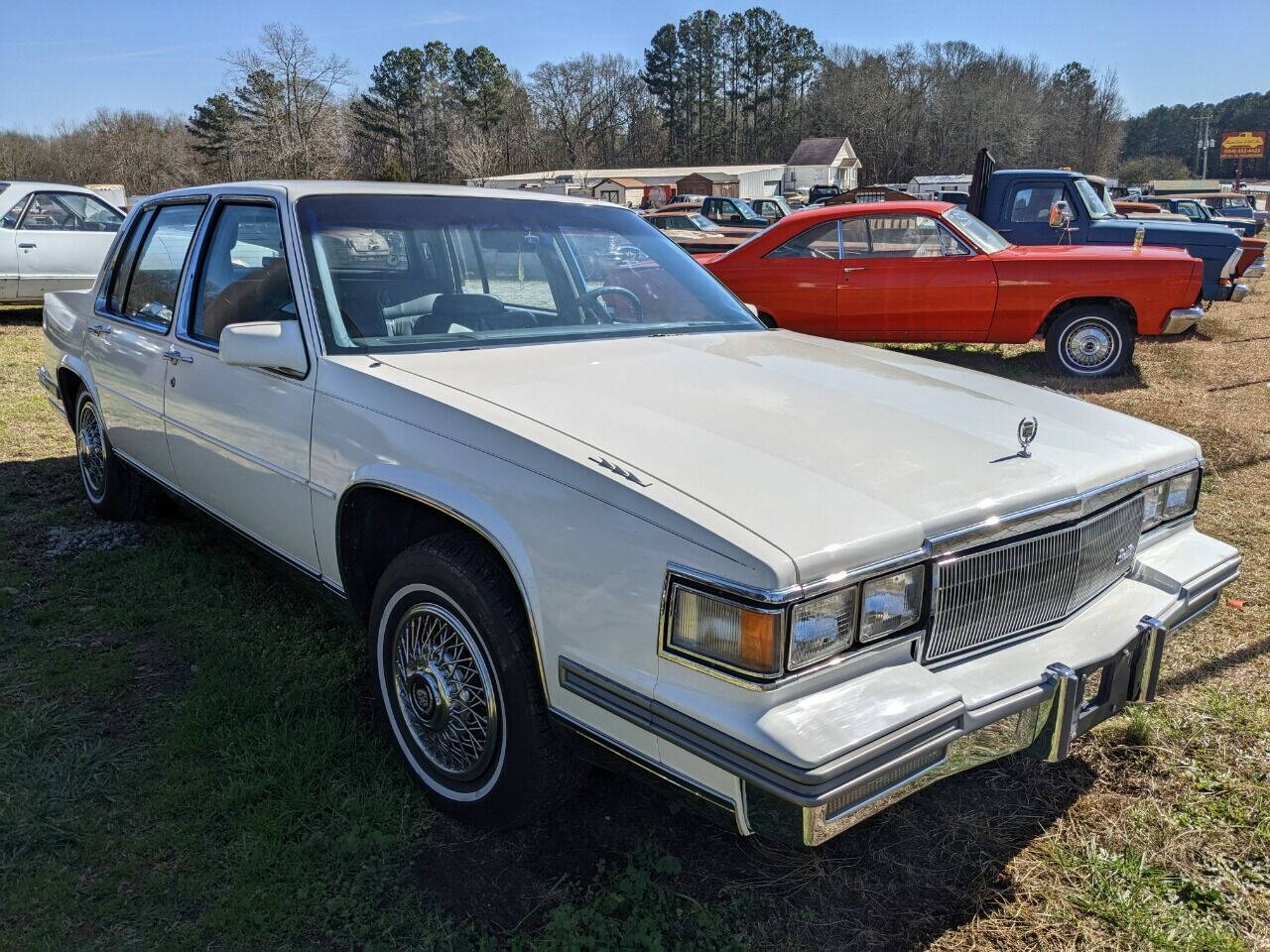
-
Drivetrain Health:
- Engine: Look for oil leaks (common but assess severity), listen for unusual noises (knocking, ticking, excessive valve train noise), and check for excessive smoke from the exhaust (blue for oil, black for rich fuel, white for coolant). Check fluid levels and condition.
- Transmission: Test all gears, both forward and reverse. Manuals should shift smoothly without grinding. Automatics should engage positively without harsh shifts or slipping.
- Transfer Case: Engage 4-High and 4-Low. Ensure it shifts cleanly and doesn’t make grinding noises. Check for leaks.
- Axles: Listen for howling or grinding noises during the test drive, indicating worn gears or bearings. Check for fluid leaks around the differential covers and axle seals.
-
Suspension and Steering:
- Leaf Springs: Check for sagging, broken leaves, or excessive rust.
- Shocks: Look for leaks or signs of being completely worn out.
- Steering Linkage: Have someone turn the steering wheel while you observe the tie rods, drag link, and steering box. Look for excessive play or worn joints. A loose steering box is a common CJ issue.
- Bushings: Inspect all suspension and body mount bushings for cracking or deterioration.
-
Electrical System: Test all lights, gauges, wipers, and the heater/blower motor. Check for frayed or exposed wiring, especially if aftermarket accessories have been added. Aftermarket stereos or alarm systems can sometimes indicate shoddy wiring work.
-
Interior: Assess the condition of the seats (tears, frame rust), dashboard (cracks, fading), and instrumentation. Check for signs of water intrusion or mold, especially under floor mats.
-
Paperwork and Modifications:
- Ensure it’s clean and matches the VIN on the vehicle.
- Maintenance Records: While rare for older CJs, any available records are a huge plus.
- Aftermarket Modifications: Many CJs have been modified. Evaluate the quality of lift kits, engine swaps, tire/wheel upgrades, and other accessories. Poorly installed mods can lead to safety issues and costly repairs.
III. Navigating the Market: Where to Find Your Dream CJ7
Finding the right 1986 Jeep CJ7 requires patience and a multi-pronged approach.
- Online Marketplaces: Websites like eBay Motors, Craigslist, and Facebook Marketplace are primary hunting grounds. Be wary of scams and always insist on seeing the vehicle in person. Dedicated Jeep forums and Facebook groups (e.g., "Jeep CJ7 Owners," "Classic Jeep For Sale") can also be excellent resources, often listing vehicles from enthusiasts.
- Classic Car Dealerships: Some specialized dealerships carry vintage Jeeps. While prices might be higher, these vehicles are often pre-inspected and sometimes come with a limited warranty or reconditioning.
- Auctions: Major classic car auctions like Mecum or Barrett-Jackson occasionally feature high-end, restored CJs. Local auto auctions might have project vehicles.
- Word-of-Mouth & Local Classifieds: Don’t underestimate the power of local connections. Check local auto classifieds, community boards, and even ask around at local mechanic shops or off-road clubs.
When you find a promising lead, always arrange to see the vehicle in daylight, preferably when it’s cold, so you can observe a true cold start. Bring a friend or, even better, a mechanic experienced with older Jeeps.
IV. Ownership Considerations: Beyond the Purchase Price
Owning a 1986 CJ7 is a unique experience, and it comes with specific considerations beyond the initial purchase.
- Maintenance: While CJs are generally robust, they require regular maintenance. Parts availability is excellent due to a thriving aftermarket, but you’ll likely encounter common issues like carburetor tuning (if not converted to fuel injection), vacuum line leaks, and ongoing rust prevention. Basic mechanical skills will save you a lot of money.
- Insurance: Consider classic car insurance. Companies like Hagerty or American Collectors Insurance often offer specialized policies that are more affordable than standard auto insurance, especially if the vehicle is not a daily driver and has agreed-upon value coverage.
- Fuel Economy: Don’t expect modern fuel efficiency. The 4.2L I6, while torquey, is not known for its MPG, often yielding low double-digits.
- Driving Experience: Be prepared for a raw, rugged ride. CJs are not quiet, comfortable, or refined like modern SUVs. They have a higher center of gravity, can be prone to body roll, and steering can feel less precise. This is part of their charm for enthusiasts, but it’s important to have realistic expectations.
- Potential for Customization: The CJ7 is a blank canvas for modification. Lift kits, larger tires, engine swaps (LS conversions are popular), interior upgrades, and off-road armor are all common. This adds to the appeal for many, but factor in these potential costs.
V. Tips for a Successful Purchase
- Set a Realistic Budget: Beyond the purchase price, factor in immediate repairs, deferred maintenance, and potential upgrades. A "cheap" CJ often becomes the most expensive.
- Get a Pre-Purchase Inspection (PPI): Unless you are an expert, pay a trusted, independent mechanic specializing in older Jeeps or 4x4s to conduct a thorough inspection. This can uncover hidden issues and save you thousands.
- Test Drive Thoroughly: Drive the Jeep at various speeds, including highway speeds if possible. Test the brakes, steering (note any pulling or excessive play), and listen for drivetrain noises. If permitted, test 4WD engagement in a safe, off-road environment.
- Research Common Issues: Familiarize yourself with model-specific problems for the 1986 CJ7 (e.g., AMC 20 axle weakness, carburetor issues, frame rust points).
- Don’t Rush: The perfect CJ7 might not appear overnight. Be patient, evaluate multiple options, and don’t let emotion override common sense.
VI. Potential Challenges and Solutions
While immensely rewarding, owning a vintage CJ7 can present challenges:
- Challenge: Finding an Unmolested, Rust-Free Example. Most CJs have either significant rust or have undergone extensive repairs/modifications.
- Solution: Be prepared to pay a premium for a truly clean, original example. Alternatively, embrace a project vehicle and budget for professional restoration or tackle it yourself if you have the skills.
- Challenge: Carburetor Issues. The original Carter BBD carburetor on the 4.2L can be finicky, especially with modern ethanol fuels.
- Solution: Learn to tune it, have it professionally rebuilt, or consider upgrading to a more reliable aftermarket carburetor (e.g., Weber) or, ideally, a modern electronic fuel injection (EFI) conversion kit (e.g., Howell, Holley Sniper).
- Challenge: Parts Availability for Specific Original Components. While aftermarket support is strong for most mechanicals, finding pristine original interior pieces or specific trim might be difficult.
- Solution: Utilize online forums, specialized salvage yards, or be open to high-quality reproduction parts.
- Challenge: Rough Ride and Poor Handling Compared to Modern Vehicles. The leaf-spring suspension and recirculating ball steering can lead to a less refined ride.
- Solution: Quality suspension upgrades (new springs, shocks, bushings) can significantly improve ride quality. Upgrading to a heavier-duty steering box or a Borgeson steering shaft can reduce play.
1986 Jeep CJ7 Estimated Price Guide
Please note: Prices are highly variable and depend on location, originality, rust level, modifications, and overall mechanical condition. This table provides a general range.
| Condition Level | Price Range (USD) | Description |
|---|---|---|
| Poor/Project | $3,000 – $8,000 | Significant rust (frame/body), major mechanical issues (non-running or needs extensive engine/transmission work), likely incomplete, requires full restoration. Suitable only for experienced builders. |
| Fair | $8,000 – $15,000 | Running and driving, but with noticeable rust, worn interior, tired mechanicals, and likely needing significant repairs or restoration. Could be a decent base for a rolling restoration. |
| Good | $15,000 – $25,000 | Solid frame with minimal surface rust, decent body with some minor imperfections, runs well but may need some deferred maintenance (e.g., suspension, brakes). A good driver-quality vehicle. |
| Excellent | $25,000 – $40,000 | Very clean body with little to no rust, strong running engine and drivetrain, well-maintained interior. May have quality modifications or a partial restoration. Ready to drive and enjoy with minimal immediate work. |
| Concours/Show | $40,000+ | Meticulously restored to original or better-than-original condition, show-quality paint, perfect interior, fully rebuilt mechanicals. Rare to find, typically from professional restorations. |
Frequently Asked Questions (FAQ)
Q: Is the 1986 CJ7 a good daily driver?
A: For most people, no. While it can be daily driven, its rugged nature, lack of modern amenities (AC, power windows, comfortable ride), and relatively poor fuel economy make it less practical than a modern vehicle. It’s best suited as a weekend toy, a dedicated off-roader, or a fair-weather cruiser.
Q: Are parts hard to find for a 1986 CJ7?
A: No, quite the opposite! Due to its popularity and the robust aftermarket, parts for the CJ7 (especially mechanical and body components) are very readily available from numerous suppliers, often at reasonable prices.
Q: What’s the best engine for a 1986 CJ7?
A: The AMC 4.2L (258 cu in) inline-six is widely considered the best balance of power, reliability, and ease of maintenance for a stock-style CJ7. Its low-end torque is excellent for off-roading. Many enthusiasts also swap in more modern engines like GM LS series V8s for significant power boosts, but this is a complex and costly modification.
Q: What should I budget for annual maintenance?
A: This varies widely based on the vehicle’s initial condition and how much you drive it. For a well-maintained "good" condition CJ7, budget anywhere from $500 to $1,500 annually for routine maintenance, fluids, and occasional repairs. If it’s a project, the sky’s the limit.
Q: Can I get classic car insurance for a CJ7?
A: Yes, absolutely. Companies like Hagerty, Grundy, and American Collectors Insurance specialize in classic car insurance and often offer better rates and "agreed value" policies for vehicles like the CJ7, especially if it’s not your primary daily driver.
Q: Is a 1986 CJ7 a good investment?
A: While no car purchase should be solely for investment, well-preserved or professionally restored 1986 CJ7s have shown steady appreciation in value over the years, particularly given its status as the last CJ. A project vehicle, however, might cost more to restore than its eventual market value. Buy it because you love it, and any appreciation is a bonus.
Conclusion
The 1986 Jeep CJ7 stands as a monument to American automotive history, representing the last breath of a legendary lineage. For those seeking a vehicle that embodies freedom, adventure, and a visceral connection to the road (or the trail), a CJ7 is an unparalleled choice. However, the journey to finding and owning the right one requires diligence, patience, and a clear understanding of what you’re getting into.
By meticulously inspecting for rust, thoroughly evaluating the drivetrain, understanding market values, and preparing for the unique aspects of classic Jeep ownership, you can confidently navigate the "1986 Jeep CJ7 For Sale" market. This isn’t just about buying a used car; it’s about investing in a lifestyle, joining a passionate community, and securing a piece of an iconic legacy that promises countless miles of open-air exhilaration. The rewards of owning a 1986 CJ7 far outweigh the challenges, offering an authentic driving experience that remains truly timeless.


